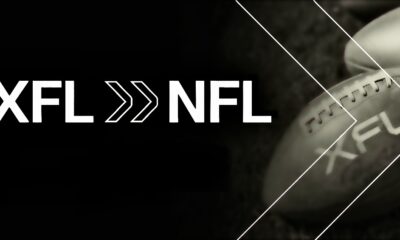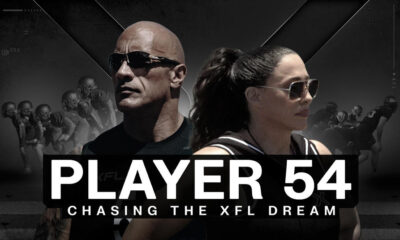
The world of alternative football has grown exponentially over the last few years. Plenty of leagues have come and gone, with a few new leagues just starting to gain some footing. The end goal for every player is to get to the highest level and perform in the NFL, but between the XFL, USFL, CFL, ELF, IFL, and the FCF, there have never been more opportunities to play professional football.
Ideally, at least a few of these alternative leagues will survive long-term and eventually thrive, helping increase the number of high-quality football players that can develop after college and make the jump to the NFL. However, something not mentioned enough is these alternative leagues can also offer another route for international players to further develop in their pursuit of the NFL.
With the global growth of American football’s popularity, we’ve seen a growing interest from the NFL in their international outreach for decades, with the implementation of various programs aimed to increase the number of European and other international athletes in the league.
Unfortunately, the gap in talent level is usually a bit too much for most European players to adjust to. Although there are definitely exceptions, it seems most players entering the NFL’s international programs are destined to spend their time on the practice squad.
While alternative leagues like the XFL and USFL are not at the same level talent-wise as the NFL, it’s still a step up from the majority of international leagues. The vast majority of players in any American league are American and were brought up in the NCAA’s structure that produces pro-ready players, which just doesn’t exist in Europe. Additionally, many of these players currently in American alternative leagues come directly from NFL rosters.
If leagues like the XFL, who have talked about their global vision countless times, embrace some of these international leagues like the European League of Football, the pathway from Europe to the NFL could become clearer than it’s ever been. Additionally, if these leagues do embrace each other, there are certainly some mutual benefits to indulge in.
The XFL’s Global Vision
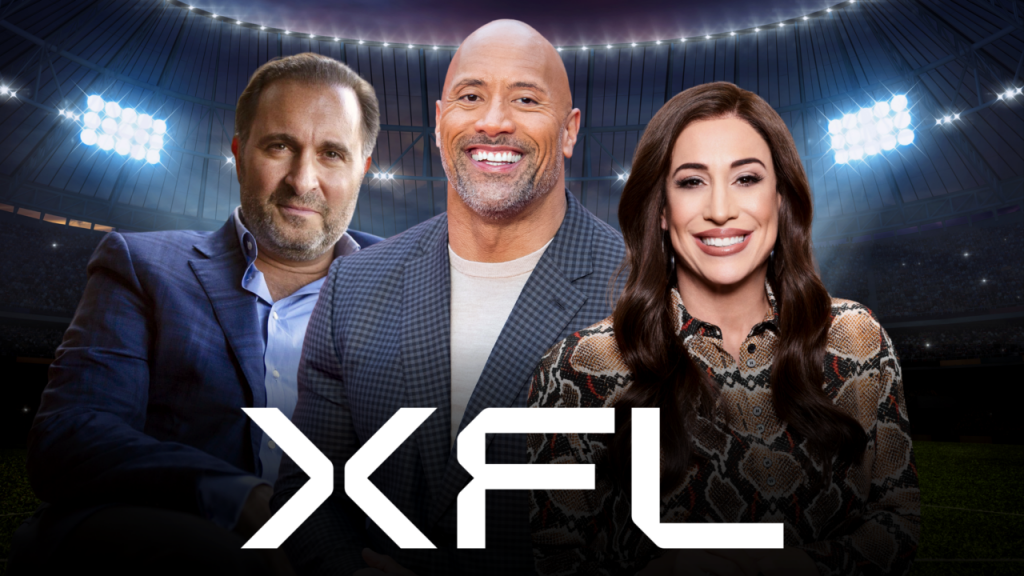
Since Dany Garcia, Dwayne “The Rock” Johnson, and Gerry Cardinale got the keys to the XFL in October of 2020, we’ve heard rumblings of the league’s “global vision,” but we’ve not been given any real info on what that means just yet. The XFL’s recently announced “global multi-year” TV deal with Disney will undoubtedly have something to do with it, but besides getting eyes from around the globe on the product, could the XFL look to become a hotspot for the world’s top international players as well?
While the NFL has international programs to get players from around the world involved with NFL franchises, the vast majority don’t get off the practice squad for several reasons. Some international players just aren’t ready to play at the NFL level, while other times, teams aren’t willing to take a real chance on a player who’s never played at the NFL or College level, among other things. However, alternative leagues like the XFL becoming a hotspot for international players would give them an opportunity to showcase their skills in live games against those brought up in the NCAA’s system, with many players coming directly from NFL teams.
The European League of Football (ELF)
For those unaware, the European League of Football is a professional American football league that currently consists of 12 teams and spans 5 European countries, with one of their primary goals to develop homegrown players into NFL prospects. The league played with 8 teams in their inaugural season in 2021 and has plans to expand every year until they’ve reached at least 24 teams.
At first glance, this might seem a bit quick for expansion, but what makes expanding for them more manageable than it would be for most American leagues is the majority of the ELF’s teams already existed in other European leagues before joining the ELF. Meaning most of their teams had previously established rosters, coaches, front office personnel, venues, fans, and more.
The ELF uses the NFL’s rules for everything besides kickoffs and overtime. In 2021 the ELF used the NFL’s standard kickoff format, but for the 2022 season, they’ve implemented the kickoff rules used in the XFL’s 2020 season, which promote less high-speed collisions while having kickoffs returned consistently and keeping the play exciting. The ELF’s overtime goes by NCAA college football rules.
After a successful inaugural season, players and coaches from around the world flocked to the European League of Football for an opportunity with the premier American football league in Europe. As the league continues to grow in the coming years, I’d expect that trend to continue.
Notable Names Involved With The ELF:
- Gary Kubiak – Advisor – Wroclaw Panthers
- Jim Tomsula – Head Coach – Düsseldorf Rhein Fire
- Björn Werner – Co-Owner/Sports Director – Berlin Thunder
- Jakob Johnson – Co-Owner – Stuttgart Surge
Additionally, newly hired XFL head coach and NFL great Wade Phillips held a football coaching masterclass at the 2021 European Coaches Convention in Berlin, with many of the ELF’s coaches in attendance.
NFL International Pathways Program (IPP)
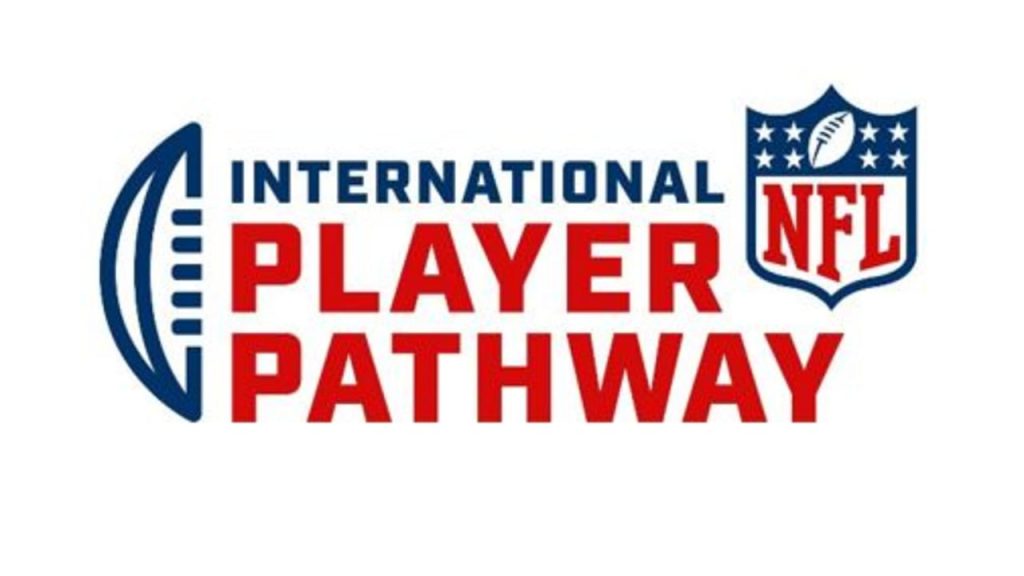
While the XFL may be a bit more open to experimenting with International outreach than the NFL, global growth has been on the NFL’s agenda for decades.
After hosting a number of games in Europe, Mexico, and Canada in the early 2000s, the NFL attempted a few different programs to drive fan growth globally and increase the number of non-American players in the league. The league’s first attempt was called ‘The International Development Practice Squad Program,’ which ran from 2004 to 2009, with another program established for the 2016 season called ‘NFL Undiscovered.’
In 2017, The NFL introduced ‘The International Pathways Program, ‘which is still in effect today. The program selects football players from around the globe to compete for a chance to be allocated to an NFL roster. Players assigned to NFL teams from the IPP do not count as one of the team’s roster spots unless moved to the active roster, effectively giving their team 91 offseason roster spots and an extra practice squad spot during the regular season.
In 2022, 13 athletes from 9 different countries were selected to compete for the chance to be allocated to the 4 AFC South teams. Out of the Four players selected earlier this year, two played in the European League of Football’s inaugural season. Former Berlin Thunder defensive lineman Adedayo Odeleye was assigned to the Houston Texans, with former Stuttgart Surge defensive back Marcel Dabo getting assigned to the Indianapolis Colts.
While only 2 ELF players made the final cut, 14 were initially invited to the NFL’s International Combine after the ELF’s inaugural season in 2021.
Defensive Linemen
- Aslan Zetterberg – Leipzig Kings
- Jan-Philipp Bombek – Hamburg Sea Devils
- Adedayo Odeleye – Berlin Thunder (Allocated to Houston Texans)
- Jai-Albert Jackson – Stuttgart Surge
- Lance Leota – Leipzig Kings
Linebackers
- Wael Nasri – Berlin Thunder
Defensive Backs
- Marcel Dabo – Stuttgart Surge (Allocated to Indianapolis Colts)
Wide Receivers
- Yoshihito Omi – Leipzig Kings
Offensive Linemen
- Fabian Kratz – Cologne Centurions
- Jan-Hendrick Hoffmeyer – Frankfurt Galaxy
- Yannic Kiehl – Frankfurt Galaxy
- Max Bruder – Leipzig Kings
Tight Ends
- John-Levi Kruse – Hamburg Sea Devils
- Igor Mažlanka – Panthers Wroclaw
It’s great to see international players get the opportunity to learn from the best in the business inside NFL facilities, but the unfortunate part is the majority rarely see actual playing time. While there are definitely some notable exceptions who’ve carved out roles on NFL rosters, it seems the majority of IPP players spend their time as a member of their team’s practice squad.
Notable International Pathways Program Participants On NFL Rosters:
- Jakob Johnson – FB – Germany – Las Vegas Raiders (formerly New England Patriots)
- Jordan Mailata – OT – Australia – Philadelphia Eagles
- Efe Obada – DE – UK – Washington Commanders (formerly Buffalo Bills, Carolina Panthers)
- Sammis Reyes – TE – Chile – Washington Commanders
European League Of Football Players Succeeding In America
Playing time might be scarce for most international players in the NFL due to the gap in talent level, but some former ELF players have found recent success in alternative leagues like the USFL.
Two of the most notable names are former Cologne Centurions running back and 2021 European League of Football MVP Madre London, along with former Berlin Thunder defensive end Kolin Hill. Generals standout wide receiver KaVonte Turpin also spent some of last season with the ELF’s Wroclaw Panthers before returning to the states to join the USFL. While the players listed are all Americans and did play in the NCAA, they rejuvenated their careers in the European League of Football and were given another chance in the states because of their performances.
After posting nearly 2,200 yards and 23 touchdowns in only 10 games for the Centurions, Madre London signed with the USFL’s Pittsburgh Maulers and has been a key piece of the team’s offense. While it’s not up to par with the season he had in Europe, through 7 games in the USFL, London currently has the 5th most rushing yards in the league while splitting carries with former Wisconsin halfback Garrett Groshek.
Former Berlin Thunder defensive end, Kolin Hill, joined the USFL’s New Jersey Generals after his time in the ELF, and also’s had a solid season back in the states. In 7 games, Hill’s totaled 22 tackles and a sack so far on the season.
With some American players headed back over to the states after a season with the ELF, If homegrown European players can perform on a level that impresses, another door’s already been opened to perform in front of NFL scouts against a higher level of competition.
The transition from Europe to the NFL can be a tough one, as Europe has no NCAA-like structure to produce professionally ready football players. While getting selected for the NFL’s IPP and spending time in NFL facilities, training with NFL players, and seeing how professional organizations operate is invaluable, there’s nothing that can further your career quite like live reps.
Alternative leagues like the USFL and XFL could easily become the next stepping stone for international players forging their path to the NFL, allowing those thriving overseas to get more film against athletes brought up in the NCAA and some fresh off NFL rosters.
How Can The XFL & ELF Benefit From Each Other?
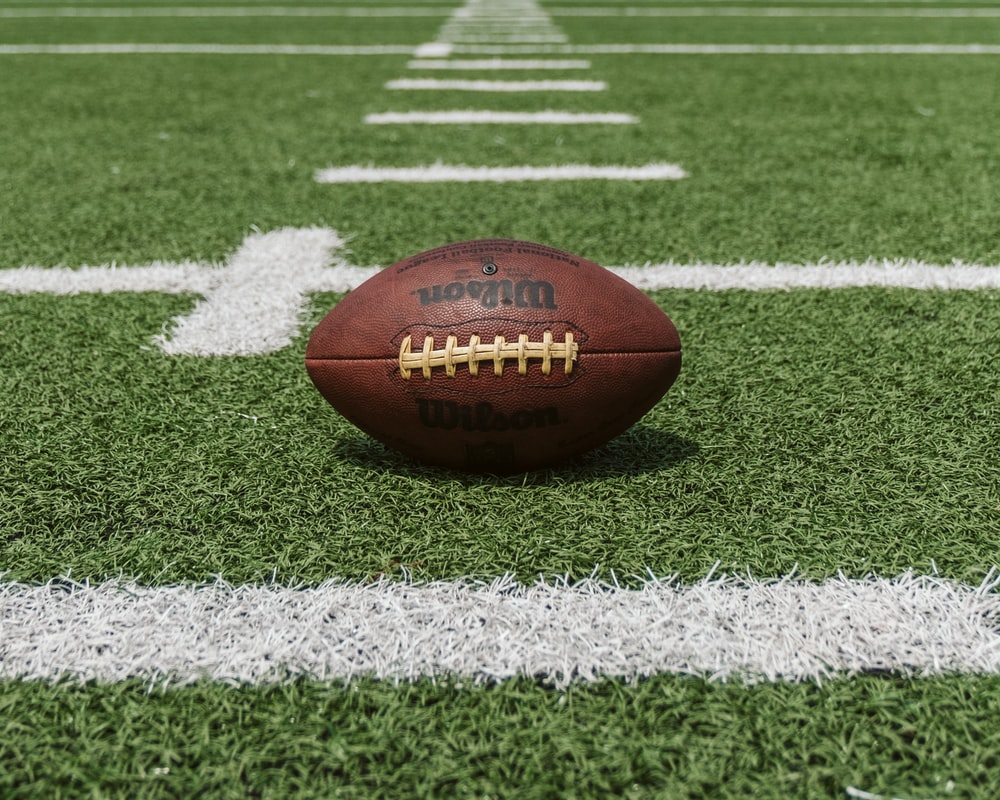
While both of these leagues are still basically newborn babies in the world of professional sports, they each have a clear vision of what they want their leagues to become. The European League of Football wants to become THE pathway from Europe to the NFL, and they’re well on their way. While The XFL wants 365-day-a-year content that reaches a global audience centered around spring football. I believe they can help each other reach those goals if they desire.
At this point, It’s no secret XFL ownership is heavily invested in their vision. With the various partnerships announced recently (Disney, NFL Alumni, FBXchange), high profile coaches, and other big-time hires, it’s clear they’re going all in. However, one concern that’s been voiced by various people is not enough quality players will be available for the number of leagues now in existence, more specifically, not enough quarterbacks and offensive linemen.
For the ELF, having players selected for the NFL’s International Pathways Program is fantastic, but getting your players on an NFL practice squad with an exempt roster spot doesn’t really draw much attention from American viewers.
To combat both issues, it’d be in the best interest of these leagues to help each other in some form. If ELF players can view the XFL and USFL as another viable option to get in front of American scouts and tv audiences, it can help all parties involved.
The ELF would benefit by receiving some level of promotion on the XFL’s broadcasts, even if it’s just a mention of where the player previously played in Europe (That’d be more coverage than anyone in the US is giving the ELF currently, but that’s still basically the bare minimum). Players would benefit by getting closer to their dream of playing in the NFL while continuing to hone their skills against a higher level of competition. And the XFL would benefit by having a consistent stream of international players to their league, not only helping attract global audiences but also attracting the eyes of more scouts to international players.
While it may be somewhat challenging to scout how an international player may transition from Europe to the NFL, it should be a bit easier to scout those competing against NCAA athletes and fringe NFL talent.
Suppose the XFL wanted to add more to their plan for non-gameday content. In that case, they could even make a yearly series about recruiting the best players worldwide, featuring all the international leagues they’d scout players from, further promoting everyone involved. Obviously, this idea would require some formal agreement, but it’d make for some interesting content, as many Americans don’t even realize American football is played overseas.
RedBird Capital’s Investment In Sports & Europe
It might seem like a bit of a stretch to think about Europe when talking about these American alternative leagues, but XFL Ownership is no stranger to European sports and the business world surrounding it.
Over the years, XFL co-owner Gerry Cardinale of RedBird Capital Partners has invested multiple billions of dollars in groups involved with sports and sports media around the world, including Fenway Sports Group, Dream Sports, NFL On Location, One Team, RedBird FC, The SpringHill Company, Wasserman, YES Network, and more. This past week, Cardinale and RedBird Capital added another European sports entity to their portfolio, agreeing to buy the Italian Series A league champions AC Milan for $1.3 Billion.
Parallels To The NBA’s Global Outreach & The G League
Before starting this section, I can hear the comments already, “The XFL isn’t going to be a developmental league, and if it is, I’m not watching.” I hate to be the one to repeat this for the millionth time, but by default, every football league that is not the NFL is a developmental league. Every football player dreams of playing in the NFL one day, and they’d be foolish not to take that opportunity if it presented itself. That being said, there’s absolutely nothing wrong with making a living in one of these alternative leagues.
The NBA has accomplished the most successful attempt at international growth by any sports league over the last few decades, and the rewards for their years of work are currently in full view.
During the 2022 NBA season, the top 3 MVP candidates were all international players (Nikola Jokic – Nuggets, Joel Embiid – 76ers, Giannis Antetokounmpo – Bucks), and the league’s top 7 rebounders are all Europeans. Additionally, Luka Doncic has become the NBA’s baby.
So how does all this basketball stuff tie into football? While the NBA and NFL are very different sports, which presents several different challenges in global growth for each league, the G-League’s become a sustainable entity in part due to the NBA’s European growth. The league’s made it a mission to include and develop players from around the globe, with 346 international players currently on G League rosters.
It’s definitely taken time for the NBA and G League to get to the point they’re at with international reach, but I’d find it hard to believe if XFL ownership expects themselves to be an overnight global sensation.
That being said, the XFL is connected enough and has enough power behind them for the global reach they desire eventually. In time, they could even become one of the most-watched American football leagues globally, especially if they embrace and develop international players as the NBA has.
The NBA’s global outreach began in the 1980s, with games hosted in various locations overseas featuring either NBA franchises facing off in foreign cities, or an NBA team taking on an International team somewhere. The G League also held international tournaments in 2018 and 2019 to help promote their All-Stars and feature national teams from around the world.
The European League of Football’s already laid the groundwork for something similar with their USA vs. ELF All-Star Game. Last year’s All-Star Game featured Team ELF taking on Team USA, but a yearly matchup between Team ELF and Team XFL could make for an exciting international series.
‘The NBA Academy‘ was another initiative formed in 2016 to drive the NBA’s international growth. The program has established itself in Australia, India, Mexico, and Senegal, as an invite-only year-round basketball development initiative for top high school age prospects outside the US. The NBA Academy also has scouts worldwide evaluating young players who compete at various levels and types of competitions, including Jr. NBA and NBA Basketball School camps.
While it’s not been established yet, European League of Football CEO Zeljko Karajica has gone on the record stating they’d like to develop an “ELF Academy” with similar goals to the “NBA Academy” in mind.
The football world is decades behind basketball in regards to international growth, but there’s a reason the NFL has been trying to gain global audiences. Not only has the global growth of basketball developed the game to a point where International players are now thriving in the NBA, it’s also gotten us to a point where the talent level is deep enough to support a league such as the G League.
Final Thoughts
If growing the game internationally and gaining a global audience is truly a goal of the XFL’s ownership, it’s probably a good idea to study the NBA’s growth over the years to learn from what they’ve done if they have not already.
We’ve seen players who’ve dominated the European League of Football come to American alternative leagues like the USFL, and while they’ve still been successful, there’s definitely a drop-off in their production relative to what it was overseas.
The NBA has made great strides over the last few decades with global growth, and many players from around the world have made a name for themselves at the highest level. However, due to football being a significantly more physically demanding sport and way more reliant on teammates than basketball, the jump from American football leagues in Europe to the NFL seems too large for most. This is also due to the fact that Europe doesn’t have an NCAA-like structure that produces pro-ready players.
All that being said, The XFL and other alternative leagues have a real opportunity to help pave the way for countless international players to get a shot in the NFL, while also promoting and growing the game globally. It’d be a long road for the football world to ever reach the point of international outreach that the NBA is currently at, but with the current football landscape, there isn’t a better time to start.
Unleash the Action: Sign up for XFL Insider and Fuel Your Passion for Football!
Matt Lyons is a Writer/Contributor for XFL News Hub, USFL News Hub, & CFL News Hub, covering the XFL, USFL, ELF, and TSL since August of 2020.

USFL and XFL Merger: A Deep Dive into the Historic Collaboration
Latest Podcast
-


XFL Podcast
/ 1 year agoXFL-USFL Merger Insights: Houston’s Future, Draft News, Player Movement – Ep. 216
Welcome to Episode 216 of the “XFL Week In Review,” your premier destination for...
By Mark Perry




